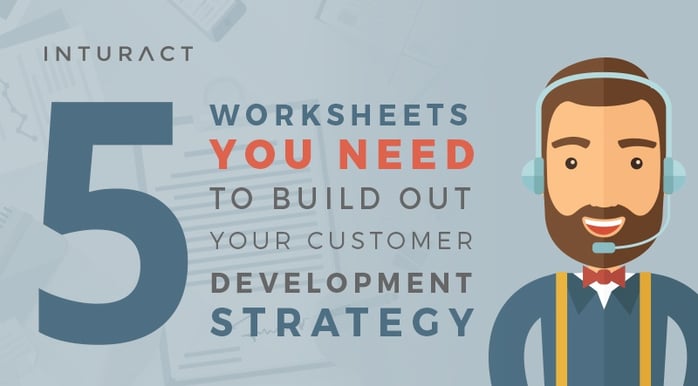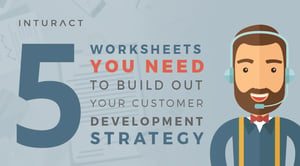
If you’ve read about the Product Death Cycle - a dire consequence of letting user feedback run you ragged - you may feel that asking prospective customers to guide your product development and marketing efforts is like waltzing on a pirate ship’s plank: One wrong step and you’re sunk. Yet, even though there are a myriad of missteps possible, customer development can save you from even more by giving you the precise information you need to find product/market fit.
In The Startup Owner’s Manual: The Step by Step Guide for Building a Great Company by Steve Blank and Bob Dorf, their introduction to customer discovery begins with a list of things NOT to do – which also neatly describes five common pitfalls to which founders attempting customer development often fall victim:
“It’s instructive to enumerate all things you are not going to do:
- Understand the needs and wants of all customers
- Make a list of all the features customers want before they buy your product
- Hand Product Development a features list of the sum of all customer requests
- Hand Product Development a detailed marketing-requirements document
- Run focus groups and test customers’ reactions to your product to see if they will buy”
The “Product Death Cycle” begins with just such a recipe. This is when well-intentioned entrepreneurs gather as much qualitative data as they can from all potential customers and act on all the feedback.
All is where the danger happens. And it’s all too easy to fall into it – which is why these 5 worksheets from The Startup Owner’s Manual* come in so very handy.
*Note: We have no affiliation with this book - we just think it’s incredibly informative and hope you do too!
Customer Development Worksheets
When “all” is the enemy, worksheets can be very helpful by giving you a checklist of precisely what to do, providing you with reassurance that you’re not leaving out anything vital. Trust the checklists. Use the checklists. Don’t have Amazon Prime and your book won’t come for a week? No worries - we’ll provide the first steps so you know where to start.
The Customer Development Team (p. 471)
This worksheet helps you correctly construct your Customer Development team and gives that team their first set of marching orders.
Why do you need to construct a customer development team? ![]()
If the Founder is supposed to do all of the footwork of hypothesizing, interviewing, and iterating - why do you need a team? Because, customer development doesn’t begin and end with ideas and interviews. You’ll need a pack of people, who understand that your venture is a work in progress, to implement the ideas and iterations that result from gathering all of this qualitative data.
You’ll need help to complete the four steps of customer development:
- Customer Discovery - In which the founder translates his vision for the company into a hypothesis about the product and business model, and then creates “experiments” to test each hypothesis to see how customers react to his or her ideas in the real world.
- Customer Validation - In which you prove that the theories you’ve just tested (and have iterated based on results), will actually result in a repeatable, scalable business model. Here you’ll test your company’s ability to scale, develop a sales roadmap for sales and marketing, and field-test on early customers.
- Customer Creation - In which you guild on your initial successes and actually begin to scale (spending serious money to marketing since you’ve just figured out how to effectively acquire customers in the previous step).
- Company Building - In which you graduate from a “startup” to a real company. You don’t stop trying to learn from your customers, but the focus shifts to company-building and formalizing processes that have proven their worth.
This checklist ensures that you form a team with the right mindset, a list of core values to guide your efforts, and - of course - the right people.
First step: Founders (not Salespeople or Marketers or, God forbid, interns) spend time outside of the building talking to ideal customer prospects.
Product Features and Benefits (p. 474)
After you’ve interviewed your customers and collected their feedback, it’s time to take a closer look at their responses. This is a checklist of the questions you need to have answered based on the qualitative data you’ve gathered. Together, the answers should explain what your product is and why people will buy it, use it, and love it.
But this checklist doesn’t stop there – it leads you through the process of uncovering the features and benefits, from your prospects’ perspectives, that result in developing a Minimum Viable Product to test.
First step: What do you think the biggest pain is in how customers work/play? If they could wave a magic wand and change anything, what would it be?
Customer Segments (p. 476)
Brand new companies may not have current customers, but that doesn’t mean you can’t begin segmenting the customers you don’t yet have. Counterintuitive – we know. But this checklist helps you develop a hypothesis of who your ideal customers are, what problems they have, and what will ultimately drive them to use and love your product.
Treat this as a living, breathing document that you edit and add to as you learn more about your ideal customers.
First step: Define the customer problem, then make a list of all the hurdles between them solving the problem with your product (ie. “Decision Makers,” expense approvals, getting buy-ins from the higher-ups). Who influences your customer’s decision to buy?
Test the Problem and Assess its Importance (p. 489)
Not all problems deserve equal consideration – severity of the problem you seek to solve is key to creating a viable product.  This checklist helps you measure the severity and importance of your potential customer’s problem or need, so you can make sure you’re solving the right one at the right time.
This checklist helps you measure the severity and importance of your potential customer’s problem or need, so you can make sure you’re solving the right one at the right time.
First step: What is the problem? What is the current solution? How does your solution compare (in ways that are important to the customer, not the ways that you – as the founder – think are “game-changing”).
Gain Customer Understanding (p. 491)
The deepest insights into potential customers reap the largest rewards, and this checklist has all of the key questions you need to ask to find those answers. This is where you look at “a day in the life” of your customer, spend actual time with them, and find out how they spend their time and money, and how, and where they find new ways to spend their time and money.
First step: Find out how the customer spends their time and money and pay attention to their current workflow. How would their workflow change with your product?
Gaining Problem/Solution Fit with Proper Customer Development
Customer development is all about finding that all-important problem/solution fit - and the best business model with which to deliver it. You’d think that it would be as easy as asking a few people “What do you want?” But there are far more important, more revealing, questions - which the right checklist (like those listed above - hint, hint) will help you ask.
We highly recommend The Startup Owner’s Manual, and its many checklists. It’s smaller than a breadbox and lighter than a doorstop, but we understand that it can be an intimidating read. Its saving grace is that even though it’s packed with information, it really is a “Step-by-Step Guide for Building a Great Company” based on what customers truly need.
If customer develpment caught your interest, you may like our free guide / template to build your buyer personas. Print it out or type your answers directly into the PDF.



